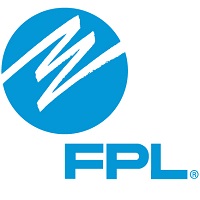Engagement Rich Student Indoor Greenhouse Lab
- School:
- Mainland High School
- Subject:
- Science
- Teacher:
- Alexis Bruckner
- Students Impacted:
- 150
- Grade:
- 9-12
- Date:
- August 19, 2024
Investor
Thank you to the following investor for funding this grant.
DUKE Energy - $998.59
Original Grant Overview
Goal
The goal is to empower students with the knowledge and ability to create a more sustainable environment while producing agriculture via indoor greenhouse. Creating a classroom model demonstrating certain benchmarks while bringing pride and excitement.
Category
Class Furniture - Carpets, choral risers, transitional seating/desks, etc.
What will be done with my students
This grant will allow all 6 of my Environmental Science classes (150-200 students) to plan for and set up an indoor greenhouse. Students will individually select which types of vegetable and/or herb seeds to plant. Students will learn how to work together to plan and set up an indoor greenhouse. The appropriate conditions to support growth will be established. (water, temperature, humidity, lighting, etc. Helping to foster a more sustainable and productive future environment in the urban Daytona city where Mainland HS is located. Many of my students do not have a yard and few do not even have a home. Knowing how to grow food with just a couple of handfuls of soil and one seed is an important skill to obtain to combat food insecurity. One potted plant… a (plant) life that when well cared for provides us (humans) with essential nourishment. Not to mention the clean oxygen provided through photosynthesis. The Hydrologic cycle, Nitrogen cycle, Carbon cycle… most if not all the Biogeochemical cycles will be displayed in the student’s indoor greenhouses. Besides learning about the importance of fertile soil students will have a real model displaying the “Greenhouse Effect” and later can bring home their own plant grown from seed and now producing for meals making everything taste a little bit better. Something to be proud of and knowledge acquired though hands-on long-term Student’s Greenhouse Lab.
Benefits to my students
Students will gain experience in land-use planning collectively utilizing an indoor greenhouse for agriculture. Enhanced classroom environment with Oxygen provided as a byproduct of photosynthesis. Monitoring plants daily excited to observe the life cycle or their individual seeds selected to plant and grow. Enjoying the beauty of increasing biodiversity in the classroom. The greenhouse also mimics the “Greenhouse Effect” of Earth that allows all life to be possible! I’m sure students will be prouder and more excited about Environmental Science class.
The following benchmarks will be addressed with this grant.
SC.912.N.1.6 Describe how scientific inferences are drawn from scientific observations and provide examples from the content being studied. • differentiate between multiple statements that are observations vs. an inference relating to Environmental Science. • practice writing observations and inferences from the same investigation. (Level 2)
SC.912.L.17.10 Diagram and explain the biogeochemical cycles of an ecosystem, including water, carbon, and nitrogen cycle. (Level 2)
SC.912.E.7.1 Analyze the movement of matter and energy through different biogeochemical cycles including water and carbon. Today I am learning to: • review and investigate the law of conservation of mass and how it relates to Earth’s systems (open and closed) and biogeochemical cycles. • diagram and explain the biochemical cycles of an ecosystem, including water cycle, nitrogen cycle, and carbon cycle • identify and describe the interaction between the earth’s four spheres including: o water, carbon, and nitrogen
SC.912.L.17.7 Characterize the biotic and abiotic components that define freshwater systems, marine systems, and terrestrial systems. (Level 2) SC.912.L.17.2 Explain the general distribution of life in aquatic systems as a function of chemistry, geography, light, depth, salinity, and temperature.
Today I am learning to: • differentiate between an ecosystem and a biome • differentiate between abiotic and biotic factors • identify the abiotic and biotic factors that influence terrestrial ecosystems: o abiotic: temperature, precipitation, nutrients in soil, latitude, mountains, bodies of water o biotic: living organisms • describe how the abiotic factors determine the biotic factors in any of the following types of biomes: o Forests, Grasslands, Desert and Tundra • identify the abiotic and biotic factors influence aquatic ecosystems: o abiotic: depth, temperature, flowing water, and standing water, salinity, dissolved oxygen o biotic: living organisms • describe how the abiotic factors determine the biotic factors in major aquatic ecosystems, such as: o Freshwater examples: ponds, lakes, and inland seas, wetlands, freshwater marshes, swamps, rivers and streams o Marine examples: estuaries, salt marshes, barrier islands, mangrove forest, oceans, and coral reefs.
SC.912.P.10.2 Explore the Law of Conservation of Energy by differentiating among open, closed, and isolated systems and explain that the total energy in an isolated system is a conserved quantity. (Level 3) Today I am learning to: • explain how energy flows in a closed system vs an open system. • determine the path of energy transfer through successive trophic levels of a food web and/or energy pyramid in terms of: Producer, Primary consumer, Secondary consumer, Tertiary consumer. • explain the pathway of energy transfer through trophic levels and the reduction of available energy at each trophic level and how it relates to the Law of Conservation of Energy. • explain why the amount of available energy is reduced in successive trophic levels due to metabolism. o ex. 10% Rule-90% of energy is used to live and only 10% is passed on to the next level (most energy is lost as heat) o ex. Compare the amount of energy in the first trophic level to the fourth trophic level
SC.912.P.10.4 Describe heat as the energy transferred by convection, conduction and radiation and explain the connection of heat to change in temperate or states of matter. • I am learning to describe heat as the energy transferred by convection, conduction, and radiation. • I am learning to explain the connection of heat to changes in temperature or states of matter. • I am learning to differentiate the three mechanisms by which heat (thermal energy) is transferred through the Earth’s systems: Radiation, Conduction, Convection
Budget Narrative
Budget Narrative:
(3x) - Barrina Mini Greenhouse with LED Grow Light for Indoor Plant, 4-Tier Portable Metal Plant Stand with Wheels, Plant Shelf with Tent, 6Pcs Plant Light with Timer and Thermo-Hygrometer, 35.4x13.8x59IN ($199.99),
(10x) - Bonviee 10 Packs Seed Starter Tray with Elevated Lid, 120 Cells Thicken Seed Starting Trays Kit with Adjustable Humidity Vent, Clear Cell Tray, and Heightened Lids for Greenhouse & Gardens, Clear ($11.99)
(3x) - Potting Soil for Indoor and Outdoor Container Plants, Enriched with Plant Food, 2 cu. ft. (2-Pack) ($31.99)
(4x) - Augshy 130 Packs 6 Inches Plastic Plant Nursery Pots, Seed Starting Pot Flower Container for Succulents, Seedlings, Cuttings, Transplanting, Planter Home Decor ($18.95)
(2x) - Survival Garden Seeds Home Garden Collection - 30 Pack with 18,500+ Non-GMO Heirloom Vegetable, Fruits, Herb Seed Varieties for Planting - Plant & Grow Survival Food & Emergency Preparedness Gear ($29.99)
(2x) - Refillable Stream and Spray Colored Squirt Bottles - 12oz Refillable Mister Bottle for Cleaning Solutions, Gardening, Grooming and Hair Salon COLORS MAY VARY | 3-BOTTLES ($12.99)
(1x) - 30 Pack Plant Saucers for Indoors 12 Inches Plant Trays for Pots Plastic Trays for Plants Square Plant Drip Trays for Potted Plants Flowerpot Saucers Clear Plant Plates to Catch Water, Bulk ($20.99)
Perhaps labels and sharpies also
Items
| # | Item | Cost |
|---|---|---|
| 1 | (3x) - Barrina Mini Greenhouse with LED Grow Light for Indoor Plant, 4-Tier Portable Metal Plant Stand with Wheels, Plant Shelf with Tent, 6Pcs Plant Light with Timer and Thermo-Hygrometer, 35.4x13.8x59IN | $599.97 |
| 2 | (10x) - Bonviee 10 Packs Seed Starter Tray with Elevated Lid, 120 Cells Thicken Seed Starting Trays Kit with Adjustable Humidity Vent, Clear Cell Tray, and Heightened Lids for Greenhouse & Gardens, Clear | $119.90 |
| 3 | (3x) - Potting Soil for Indoor and Outdoor Container Plants, Enriched with Plant Food, 2 cu. ft. (2-Pack) | $95.97 |
| 4 | (4x) - Augshy 130 Packs 6 Inches Plastic Plant Nursery Pots, Seed Starting Pot Flower Container for Succulents, Seedlings, Cuttings, Transplanting, Planter Home Decor | $75.80 |
| 5 | (2x) - Survival Garden Seeds Home Garden Collection - 30 Pack with 18,500+ Non-GMO Heirloom Vegetable, Fruits, Herb Seed Varieties for Planting - Plant & Grow Survival Food & Emergency Preparedness Gear | $59.98 |
| 6 | (2x) - Refillable Stream and Spray Colored Squirt Bottles - 12oz Refillable Mister Bottle for Cleaning Solutions, Gardening, Grooming and Hair Salon COLORS MAY VARY | 3-BOTTLES | $25.98 |
| 7 | (1x) - 30 Pack Plant Saucers for Indoors 12 Inches Plant Trays for Pots Plastic Trays for Plants Square Plant Drip Trays for Potted Plants Flowerpot Saucers Clear Plant Plates to Catch Water, Bulk | $20.99 |
| Total: | $998.59 |














Share
Please share this page to help in fulfilling this grant.
Email to a Friend